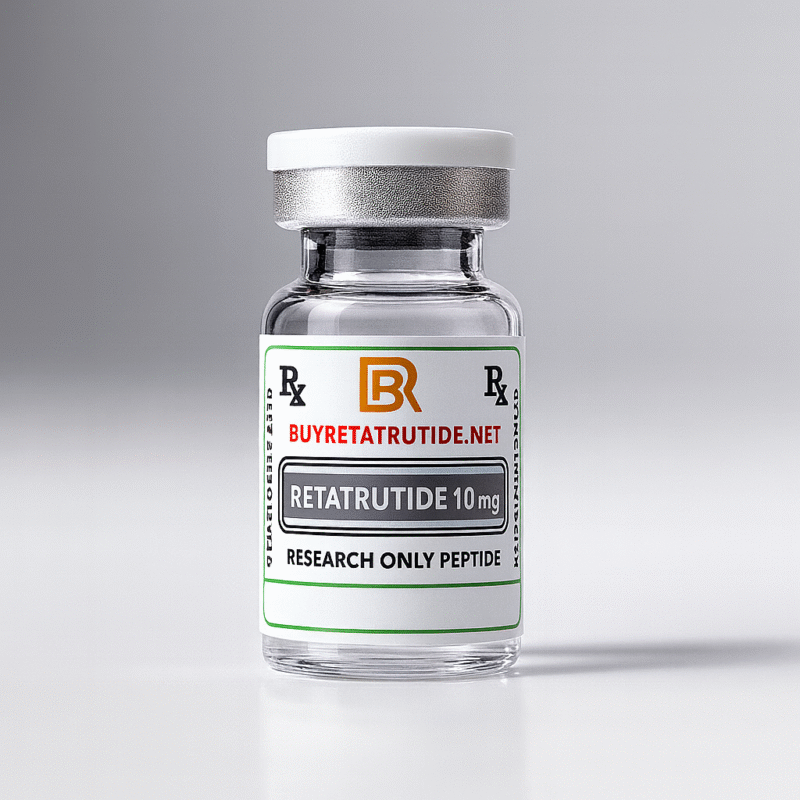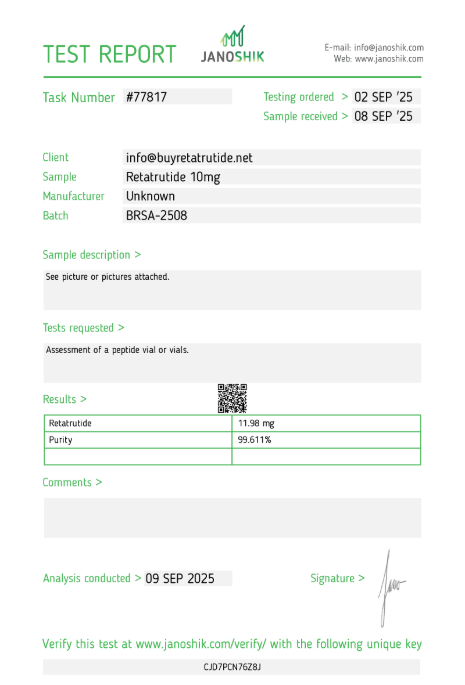GLP-1 Receptor Biology and Function
The GLP-1 receptor belongs to the class B G-protein coupled receptor family and is widely distributed throughout the body, with particularly high expression in pancreatic beta cells, the central nervous system, and gastrointestinal tract. This receptor plays a fundamental role in the incretin effect, the phenomenon whereby oral glucose produces a greater insulin response than intravenous glucose administration.
GLP-1 receptor activation triggers a cascade of intracellular signalling events that influence glucose metabolism, appetite regulation, and energy balance. The receptor couples to Gs proteins, leading to increased cyclic AMP (cAMP) production and activation of protein kinase A (PKA). This signalling pathway modulates numerous downstream effects, including enhanced insulin secretion, delayed gastric emptying, and reduced food intake.
The GLP-1 system demonstrates remarkable specificity and context-dependent responses. In pancreatic beta cells, GLP-1 receptor stimulation enhances glucose-stimulated insulin secretion while maintaining glucose-dependent activity, helping to prevent hypoglycaemia. In the central nervous system, GLP-1 receptor activation influences appetite centres, promoting satiety and reducing food intake.
Ready to Order?
Choose your preferred amount below, fast shipping and secure checkout.
-
Reta 10mg 3 Vials
£195.00Independently verified COA. UK stock, worldwide delivery. For lab use only.
Retatrutide’s GLP-1 Receptor Activation Mechanism
Retatrutide’s interaction with GLP-1 receptors occurs through a sophisticated binding mechanism that optimizes receptor activation while maintaining selectivity. The medication’s molecular structure includes specific amino acid sequences that confer high affinity for the GLP-1 receptor binding site, enabling potent and sustained activation.
The binding kinetics of retatrutide at GLP-1 receptors differ significantly from native GLP-1. While endogenous GLP-1 has a short half-life of approximately 2-3 minutes due to rapid degradation by dipeptidyl peptidase-4 (DPP-4), Retatrutide’s modified structure provides resistance to DPP-4 cleavage, extending its duration of action to several days.
This prolonged GLP-1 receptor activation creates sustained metabolic effects that contribute to Retatrutide’s superior efficacy. The medication maintains GLP-1 receptor signalling throughout the dosing interval, providing continuous metabolic support rather than the pulsatile effects seen with native GLP-1 or shorter-acting agonists.
The GLP-1 component of Retatrutide’s mechanism works synergistically with its GIP and glucagon receptor activities. This triple activation creates a comprehensive metabolic response that addresses multiple aspects of metabolic dysfunction simultaneously, resulting in more robust and sustained therapeutic effects.
Metabolic Effects of GLP-1 Receptor Activation
GLP-1 receptor activation by retatrutide produces a wide array of metabolic benefits that extend well beyond simple insulin secretion. The most significant effects include enhanced glucose disposal, delayed gastric emptying, and modulation of appetite and satiety, all of which contribute to Retatrutide’s impressive weight loss and metabolic outcomes.
Glucose metabolism benefits from GLP-1 receptor activation through multiple mechanisms. In pancreatic beta cells, GLP-1 receptor stimulation enhances glucose-stimulated insulin secretion, improving the body’s ability to handle postprandial glucose loads. This effect is particularly important for individuals with type 2 diabetes, where beta cell function is often compromised.
Beyond insulin secretion, GLP-1 receptor activation improves glucose uptake in peripheral tissues, particularly skeletal muscle and adipose tissue. This enhanced glucose disposal helps maintain normal blood glucose levels and reduces the metabolic stress associated with hyperglycaemia. The combined effect of improved insulin secretion and enhanced glucose uptake creates a powerful glucose-lowering response.
Appetite regulation also benefits significantly from GLP-1 receptor activation. GLP-1 receptors in the central nervous system modulate appetite centres, promoting satiety and reducing food intake. This effect contributes to Retatrutide’s ability to promote significant weight loss while maintaining patient satisfaction and adherence.
Weight Loss Mechanisms Through GLP-1 Activation
The GLP-1 component of Retatrutide’s mechanism contributes substantially to weight loss through several distinct pathways. Unlike GIP, which primarily affects metabolic processes, GLP-1 receptor activation influences energy balance through both behavioural and physiological mechanisms.
One of the most important weight loss mechanisms involves GLP-1’s effects on appetite and satiety. GLP-1 receptor activation in the central nervous system promotes satiety signals, reducing hunger and food intake. This effect is particularly pronounced after meals, helping to prevent overeating and promote portion control.
GLP-1 receptor activation also influences gastric emptying, slowing the rate at which food moves from the stomach to the small intestine. This delayed gastric emptying creates a prolonged feeling of fullness, further reducing food intake and promoting weight loss.
The metabolic effects of GLP-1 receptor activation create a favourable environment for weight loss by reducing caloric intake while maintaining metabolic efficiency. This approach, combined with the appetite-suppressing effects of GLP-1 receptor activation, creates a comprehensive approach to weight management.
Clinical Evidence for GLP-1 Effects
Clinical trials of retatrutide have provided compelling evidence for the importance of GLP-1 receptor activation in achieving superior weight loss and metabolic outcomes. The medication’s triple agonist design has consistently outperformed single and dual agonists in head-to-head comparisons, with GLP-1 activation playing a crucial role in these superior results.
Phase 2 clinical trials demonstrated that retatrutide achieved significantly greater weight loss compared to semaglutide, a GLP-1 receptor agonist, and Tirzepatide, a dual GIP/GLP-1 agonist. These results suggest that the addition of glucagon receptor activation to GIP/GLP-1 agonism provides additional metabolic benefits that translate into superior clinical outcomes.
The weight loss achieved with retatrutide has been particularly impressive, with many patients achieving 20-25% body weight reduction over 48 weeks of treatment. This level of weight loss approaches that achieved with bariatric surgery, representing a major advancement in medical weight management.
Metabolic improvements with retatrutide extend beyond weight loss to include significant improvements in glycaemic control, lipid profiles, and cardiovascular risk factors. These comprehensive benefits likely result from the synergistic effects of triple receptor activation, with GLP-1 playing a crucial role in metabolic regulation.
Safety Profile of GLP-1 Receptor Activation
The safety profile of GLP-1 receptor activation by retatrutide has been generally favourable in clinical trials, with most adverse events being mild to moderate in severity and consistent with the known effects of incretin-based therapies. The GLP-1 component does not appear to add significant safety concerns beyond those associated with GLP-1 receptor activation.
Gastrointestinal side effects, including nausea, vomiting, and diarrhoea, remain the most common adverse events with retatrutide. These effects are primarily attributed to GLP-1 receptor activation, particularly in the early stages of treatment as patients adjust to the medication.
The cardiovascular safety of GLP-1 receptor activation has been well-established through extensive clinical trials. GLP-1 receptor agonists have demonstrated cardiovascular benefits in large outcome studies, reducing the risk of major adverse cardiovascular events in patients with type 2 diabetes and established cardiovascular disease.
Hypoglycaemia risk with retatrutide remains low, particularly when used as monotherapy. The glucose-dependent nature of GLP-1’s insulinotropic effects helps prevent excessive insulin secretion in the absence of elevated glucose levels, maintaining a favourable safety profile.
Order Retatrutide Online
Available in 10mg vials. Select your pack size and checkout securely below.
-
Reta 10mg 3 Vials
£195.00Independently verified COA. UK stock, worldwide delivery. For lab use only.
Frequently Asked Questions
- How does GLP-1 receptor activation differ from GIP activation? GLP-1 receptor activation primarily influences appetite suppression, gastric emptying, and insulin secretion, while GIP activation focuses more on metabolic processes like glucose disposal and lipid metabolism. The combination provides comprehensive metabolic benefits.
- What are the main weight loss mechanisms of GLP-1 activation? GLP-1 receptor activation promotes weight loss through appetite suppression, delayed gastric emptying, and enhanced satiety signals. These effects work together to reduce caloric intake and promote sustainable weight loss.
- Is GLP-1 receptor activation safe for long-term use? Clinical trials have shown that GLP-1 receptor activation by retatrutide has a favourable safety profile, with no significant safety signals identified in studies to date. The most common side effects are mild gastrointestinal symptoms but there are some rare side effects, some serious.
- Can GLP-1 receptor activation help with diabetes management? Yes, GLP-1 receptor activation helps improve glycaemic control by enhancing insulin secretion, slowing gastric emptying, and reducing postprandial glucose excursions. This makes it particularly effective for type 2 diabetes management.
- How does Retatrutide’s GLP-1 activation compare to other medications? Retatrutide’s triple agonist design, including GLP-1 receptor activation, has shown superior weight loss and metabolic outcomes compared to single or dual agonists in clinical trials.
- What are the main side effects of GLP-1 receptor activation? The most common side effects are gastrointestinal, including nausea, vomiting, and diarrhoea. These effects are usually mild to moderate and tend to improve over time as patients adjust to the medication.
- How long do the effects of GLP-1 receptor activation last? Retatrutide’s modified structure provides resistance to degradation, allowing for sustained GLP-1 receptor activation throughout the dosing interval, typically several days.

